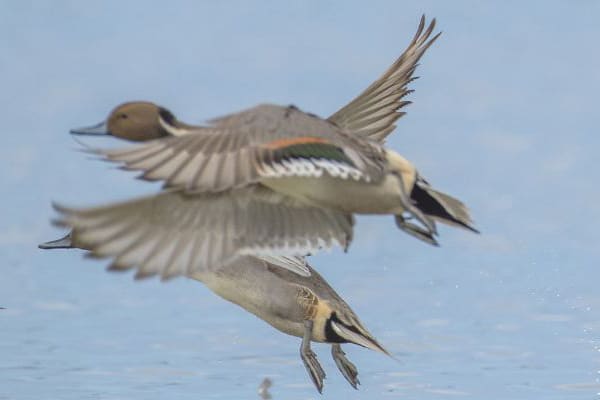
Ducks Unlimited – A conservation success story over the pond
A look at Ducks Unlimited, a US-based organisation founded by hunters and dedicated to conserving and restoring wildfowl habitat.
Get information on the legal shooting season for mammals and birds in the UK.
Learn about our current conservation projects and how you can get involved.
Comprehensive information and advice from our specialist firearms team.
Everything you need to know about shotgun, rifle and airgun ammunition.
Find our up-to-date information, advice and links to government resources.
Everything you need to know on firearms law and licensing.
All the latest news and advice on general licences and how they affect you.
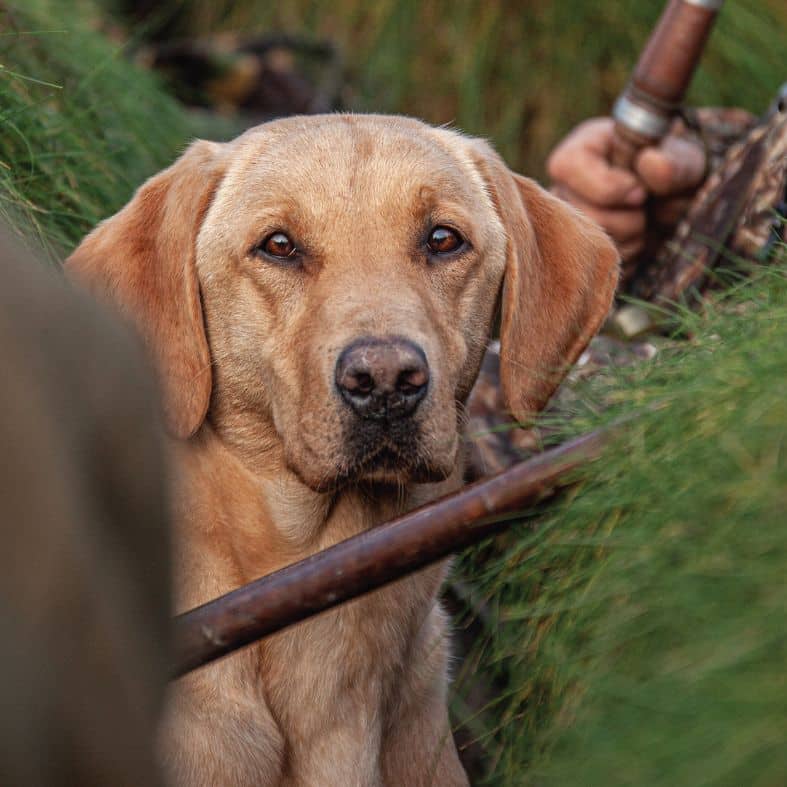

Eric Begbie looks at the special relationship between ’fowlers and their four-legged friends.
Wildfowling may be, essentially, a solitary pursuit but exponents of the craft are never really alone when a faithful gundog accompanies their forays on to the remote marshes and estuaries where geese and ducks are pursued. I have always regarded man (or woman) and their dog as a team that works together, seamlessly, to provide the complete foreshore experience.
It is tempting to begin any consideration of the wildfowler’s dog by looking at how a training schedule might be constructed and implemented, but perhaps it might be better to first look at the reasons a ’fowler has a dog and what particular characteristics suit a canine companion to work on a winter estuary or saltmarsh. What makes a wildfowling dog different from any other gundog? Indeed, need there be any difference?
Every shooting sportsperson has his or her favourite breed of dog and to suggest that one variety is most suitable is to invite a torrent of abuse from the loyal devotees of all the others. But, throwing caution to the winds, I am going to stick my neck out. Labrador retrievers every time (letters of complaint can be sent here).
Seriously, though, labs are not the only dogs to be used by wildfowlers. A number of years ago BASC published the results of a gundog survey. This showed that, among those members who owned gundogs, Labradors were the most popular breed, closely followed by springer spaniels. Other breeds, such as golden and flatcoated retrievers, also have their fans and, especially in the eyes of coastal fowlers, there is a growing interest in American breeds such as the Chesapeake Bay retriever and the Nova Scotia duck tolling retriever.
So, let’s start by thinking about the nature of wildfowling. I tend to emphasise the first syllable – it is not only that the ducks and geese are truly wild quarry; the places and conditions in which we pursue them can also be very wild. Indeed, we relish wild landscapes and stormy weather, not least because that is when we have the greatest chance of success.
Due to the nature of our sport, it is likely that a shot bird will fall in water. Hence the primary requirement for a dog to retrieve our prize. Add to that elements such as freezing conditions, high winds, strong currents and the very size and weight of an adult goose, and we begin to develop a picture of the characteristics our dog will require. Words such as “hardy”, “powerful” and “resolute” spring to mind.
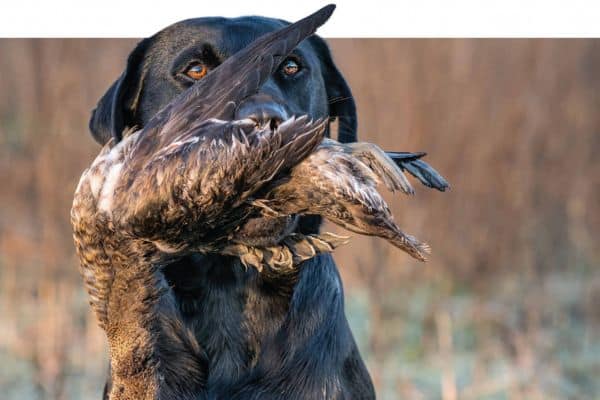
That, however, is only part of the picture. Earlier, I mentioned that wildfowler and dog form a team; a team that will spend many hours in remote and lonely locations, waiting for the flight of fowl that will, on a good day, reward their efforts. Hours before dawn, hours around dusk, hours under the moon. So, add “patience” and “empathy” to the qualities needed – by both ’fowler and dog.
The final requirement that I want to add into that mix is “obedience”. That might sound a trifle draconian but, when you think about it, your dog is working in situations that can involve elements of danger. I have known dogs that would have been driven by their determination to retrieve a bird to the extent of ignoring any imminent danger that they might have sensed. If the dog is heading too far out in a stormy sea, onto thin ice or into a fast-flowing current, you do need to be sure that you can stop and recall him.
The seven Labradors who shared my wildfowling career possessed each of those qualities in different and variable proportions. All were undoubtedly hardy. I frequently watched black dogs turn white from the ice crystals forming in their fur within minutes of emerging from the sea. None ever suffered any hardship from immersion in cold water. All were equally powerful when it came to long-distance swimming or carrying a shot greylag or pinkfoot. But then the differences kicked in – sometimes due to peculiarities in the personalities of the dogs but more often the result of inadequacies in my training of them.
Meg was the first of the tribe and, arguably, the least well-trained. In her favour, she was certainly the most intuitively suited to wildfowling. Her ears would pick up the sounds of approaching geese long before mine did and she would alert me with an increased rate of tail wagging. When crouched in a gutter on the shore or a hide on the marsh, she would sit looking back over my shoulder and let me know if she saw ducks approaching from behind our position.
One of the problems faced when ’fowling is that situations often arise where a shot bird has to be picked quickly to avoid it being swept away in the current or floating out of sight on the tide. In most other branches of shooting sport, the perceived wisdom is to wait at least ten seconds before sending a dog to retrieve, so that it does not come to associate a shot or a marked fall with an immediate command to fetch.
As a young wildfowler, I became so excited by a rare successful shot – and was so desperate not to lose the bird – that Meg was sent to retrieve as soon as I saw the duck or goose fall. The result, of course, was inevitable. Before long, picking up and sharing my excitement, she no longer waited to be sent but was up and away with no need for an order. My fault entirely, although on several occasions her indiscipline paid dividends and she streaked out after a shot when I thought I had missed the bird. She knew (or sensed) better and pursued its line until it dropped from the sky.
Because I used my dog for rough shooting as well as ’fowling, the stage was soon reached where Meg became a truly supreme dog on the estuary but was an absolute embarrassment in polite company. That is when Moy joined the team. In many ways she was the opposite of Meg and, to be fair, I took much more care over her basic training. She did not have Meg’s intuition for fowling but I could handle her onto a sixpence at 200 metres. During her long life she maintained impeccable manners, but I still think of her as a great gundog who came wildfowling, rather than as a wildfowling dog.
With the five Labradors that followed Meg and Moy, I tried to achieve a balance between the two extremes, so here are a few tips for those who, like me, want a wildfowling dog who will not let them down when shooting in company.
Firstly, dealing with the thorny problem of running-in to shot, we simply have to accept that there will be some occasions when a dog must be sent immediately to retrieve a goose or duck that has fallen into water. There are similar situations in game shooting where, from the point of view of humane respect for our quarry, a dog must be sent immediately to pick a wounded bird or runner.

I think the answer is to deliberately build in a delay to the (hopefully) more frequent times when the bird is seen to be dead and not going anywhere. Key to this is to vary the time before sending the dog so that it cannot predict when the retrieve command will be issued. I take this a stage further and avoid sending the dog to pick every bird. Occasionally, when the fallen fowl can be seen lying dead at a reasonable distance, I’d tell the dog to “stay”, climb out of my creek or gutter and go to pick the bird myself. It is then very important to praise the dog for staying as soon as you return with the duck or goose.
The more I think about it, the more I believe than non-predictability is one of the most vital concepts in gundog training. We always want our dog to wait for our command before doing anything. Otherwise, the teamwork to which I alluded earlier can descend into a farce with the dog running the show or, at least, the ’fowler becoming exceedingly frustrated.
I guess my second point would be concerned with strength and fitness. A fowling dog does need to be physically up to the job. In this connection, diet is important and I’d recommend a mix specially formulated for working dogs. Then, especially if you do not do much shooting between February and September, stepping up exercise sessions in the month before the season opens is really a must.
My third point is a bit more airy-fairy. I am a firm believer in the idea of a wildfowler and his dog having a special relationship. Talk to your dog – out on the far reaches of the saltings, no-one is going to hear you and call in a psychiatrist. Indeed, I am sure there are mental health benefits to talking to a dog. He will never contradict what you say or ridicule you for your opinions! Also show your dogs that you care about them. Carry a towel so that you can give them a rub-down before getting into the car at the end of a flight. The dogs may be hardy enough to swim in near-freezing water but it won’t enhance their health to lie, wet, in the back of a vehicle for an hour or more.
It may be fanciful, but I am sure that my dogs really enjoyed a treat at the conclusion of a ’fowling expedition. In the days when I shot a lot on the north shore of the Tay estuary, there was a butcher’s shop in the village of Errol that sold the most wonderful hot steak bridies. (For non-Scots readers, bridies are a bit like Cornish pasties without the potato and consisting of minced beef and seasoning in a flaky pastry casing.) After a morning flight, I could almost discern a smile on the Labradors’ faces when I drew up outside that shop to get them (and me) a treat.

A look at Ducks Unlimited, a US-based organisation founded by hunters and dedicated to conserving and restoring wildfowl habitat.
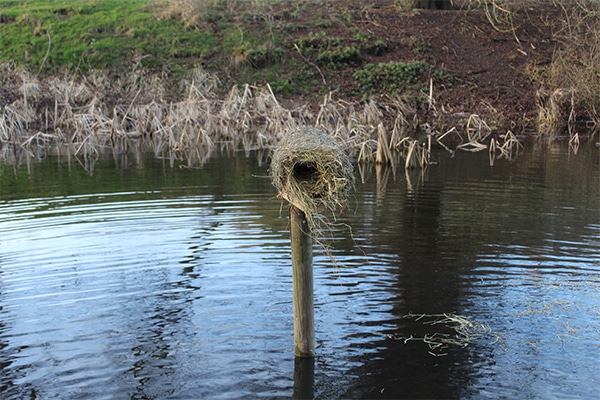
Citizen science will aid understanding of mallard nesting habitat preference in bid to boost numbers.
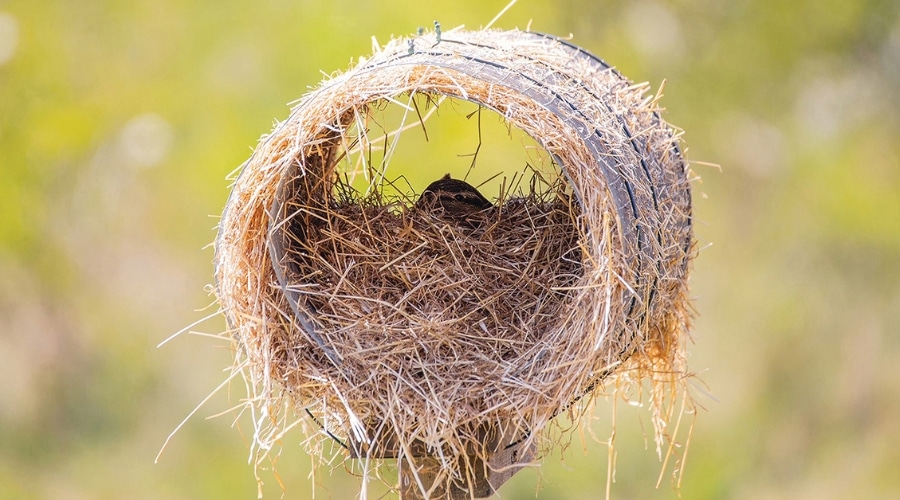
Once occupied, installing duck nest tubes can increase mallard hatching rates to more than 90 per cent.
Sign up to our weekly newsletter and get all the latest updates straight to your inbox.
© 2023 British Association for Shooting and Conservation. Registered Office: Marford Mill, Rossett, Wrexham, LL12 0HL – Registered Society No: 28488R. BASC is a trading name of the British Association for Shooting and Conservation Limited which is authorised and regulated by the Financial Conduct Authority (FCA) under firm reference number 311937.
If you have any questions or complaints about your BASC membership insurance cover, please email us. More information about resolving complaints can be found on the FCA website or on the EU ODR platform.
This website uses cookies so that we can provide you with the best user experience possible. Cookie information is stored in your browser and performs functions such as recognising you when you return to our website and helping our team to understand which sections of the website you find most interesting and useful.
Strictly Necessary Cookie should be enabled at all times so that we can save your preferences for cookie settings.
If you disable this cookie, we will not be able to save your preferences. This means that every time you visit this website you will need to enable or disable cookies again.
This website uses Google Analytics to collect anonymous information such as the number of visitors to the site, and the most popular pages.
Keeping this cookie enabled helps us to improve our website.
Please enable Strictly Necessary Cookies first so that we can save your preferences!
More information about our Cookie Policy